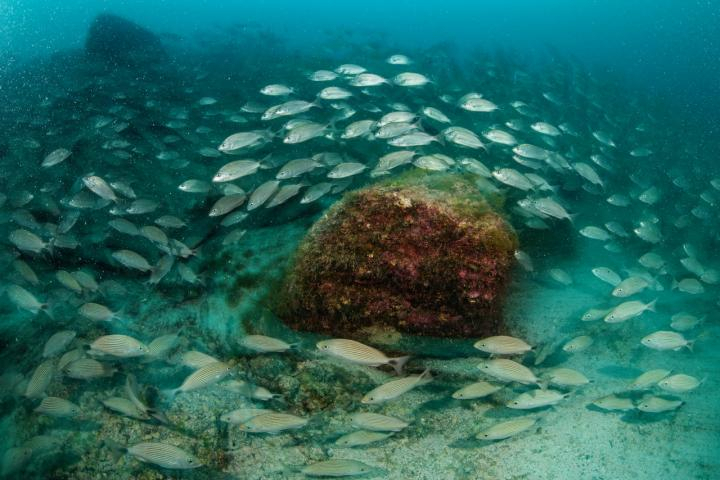
An international team of researchers has found that the fish population in marine protected areas (MPAs) is more abundant when compared to that in the outside habitat.
The researchers used hydroacoustics technology to find that the fish population was four times abundant in Mexico's protected Cabo Pulmo National Park than the regions outside it. The new finding in hydroacoustics points towards a new, more cost-effective method to assess fish population.
Researchers surveyed the marine life using sound waves produced by hydroacoustic equipment mounted on boats. Various methods like transects and scanning the water column in rows were employed for the survey to find that fish density, total biomass and the size of individual organisms were higher inside the MPA.
Octavio Aburto, a marine ecologist at Scripps Institution of Oceanography at the University of California San Diego said, "Managers and authorities in many countries spend a lot of financial resources assessing marine protected areas. The results of this paper demonstrate that it is possible to use acoustic technologies to generate information about marine resources inside MPAs in a faster and less expensive way, reducing the costs for governments in ocean conservation."
Local residents of Cabo Pulmo had created the 71-square-kilometer undersea park in 1995 to protect waters they fished.
The study published in the journal Scientific Reports stated that the MPA protected the fish population from fleets which operated beyond its boundaries. Scripps researchers have conducted several studies in Cabo Pulmo since 2002. Scuba divers conduct the underwater visual census of coastal marine life for Scripps and other organizations.
Jack Egerton, a researcher at the University of Texas said, "Both hydroacoustic and marine protected areas are well-established but it is novel to use the former to assess the latter. Through this, we have been able to see how important the Cabo Pulmo National Park is for fish population in the area."
Even though hydroacoustic surveys are more cost-effective than the underwater visual censuses, the latter method would help in species-specific information. The acoustic method could, however, overcome issues like diver depth limits and water clarity.
However, it was also found that animal abundance in reefs was around 50 times higher than the water outside the MPA.









